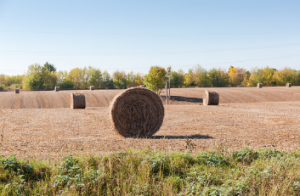If you’re planning to buy a new baling twine, make sure to consider the pros and cons of various brands. The main benefit of baling twine is its ability to protect bales when they’re stored outdoors. It is especially useful for livestock farmers, who don’t always have an indoor storage facility. The twine also resists knotting and rotting, allowing you to make the most of the space inside the baler box.
 Baling twine has several benefits that make it the perfect choice for livestock farming. Its strength and natural durability make it the ideal choice for baling. As a bonus, it can be a sustainable choice as it does not harm the environment. It can be easily marketed and purchased, and the different varieties are available in various colours. Choose a colour that matches your hay. A UV stabilized baling twine will prevent several potential issues and ensure a longer life for your hay.
Baling twine has several benefits that make it the perfect choice for livestock farming. Its strength and natural durability make it the ideal choice for baling. As a bonus, it can be a sustainable choice as it does not harm the environment. It can be easily marketed and purchased, and the different varieties are available in various colours. Choose a colour that matches your hay. A UV stabilized baling twine will prevent several potential issues and ensure a longer life for your hay.
Baling twine is more durable than standard twines, and it is eco-friendly. It is also biodegradable, which means it won’t cause any damage to the environment. The twine should also be UV stabilized to discolour or wear down over time. There are various colours available for baling twine, so you can choose the one that suits your needs the best.
The benefits of baling twine are preventing moisture and dust from penetrating the bale. As a result, it helps the hay remain dry and clean, which helps it develop into fresh fodder. It also means that the baler twine can last longer. So, what are the benefits of baling twine? Its many uses include packing hay, building fences, securing hay, and more.
One of the best aspects of baling twine is its durability. It doesn’t break, and it doesn’t need to be trimmed or treated in any way. It only needs a bit of water to stay hydrated, which means it doesn’t need extra care or attention. Plus, it gives the bales a cleaner appearance than standard twines. But, as with any other type of twine, there are some important things you need to consider when choosing baling twine.
Unlike cotton or plastic, baling twine is not harmful to the environment. It’s biodegradable. It means that it will not be added to landfills, another benefit. Further, it will not break and will last longer. Moreover, it can be moulded into various shapes, which will make it more efficient. The more flexible baling twine, the better. Aside from being eco-friendly, it also saves your money.
The natural texture of hay makes it easy to mould into various shapes. Furthermore, the natural colour and texture of hay make it more attractive. As a result, it is easier to mould into various sizes and shapes. In addition, baling twine offers higher yields than other types of twine. It is also safer than another twine. It is also environmentally friendly, so it is the perfect choice for a bale. It is also ideal for use in the livestock-farming industry.
Aside from these benefits, baling twine is also beneficial for livestock. Its natural colour and texture make it easier to mould into different shapes. The twine’s durability also allows for higher yields than other twines. It is environmentally friendly and has more yields than other materials. Hence, it is great for farmers. In addition, it helps wildlife, farmers, and ranchers. The twine is recyclable, and it is an environmentally-friendly option.
Another advantage of baling twine is its ability to resist dust and moisture. This property helps hay stay dry and clean and makes it healthier for animals. It also provides a more secure environment for livestock. In addition to these benefits, baling twine is also environmentally friendly and is resistant to breaks and other damages. However, it is a bit more expensive than other forms of twine. Nevertheless, the price is more reasonable compared to other types of twine.
Other benefits of baling twine are its biodegradability and durability. They won’t contribute to landfill waste and are easily recyclable. They are also more durable and less likely to break than other types of twine. And, unlike most other types of twine, baling twines can be cut to specific lengths. Besides, these baling twines are often used as feed rolls and feeders for livestock.
Baling twine is a rope made from natural fibres and available in different colours and types. The twine is ideal for many repair applications and is commonly used in farming. A baling twine that is smaller in diameter is known as baling twine. This rope can also be used to tie up other fibre types. When a string is thinner than the twines, it is called a monofilament.
Click this Link for additional information on baling.


